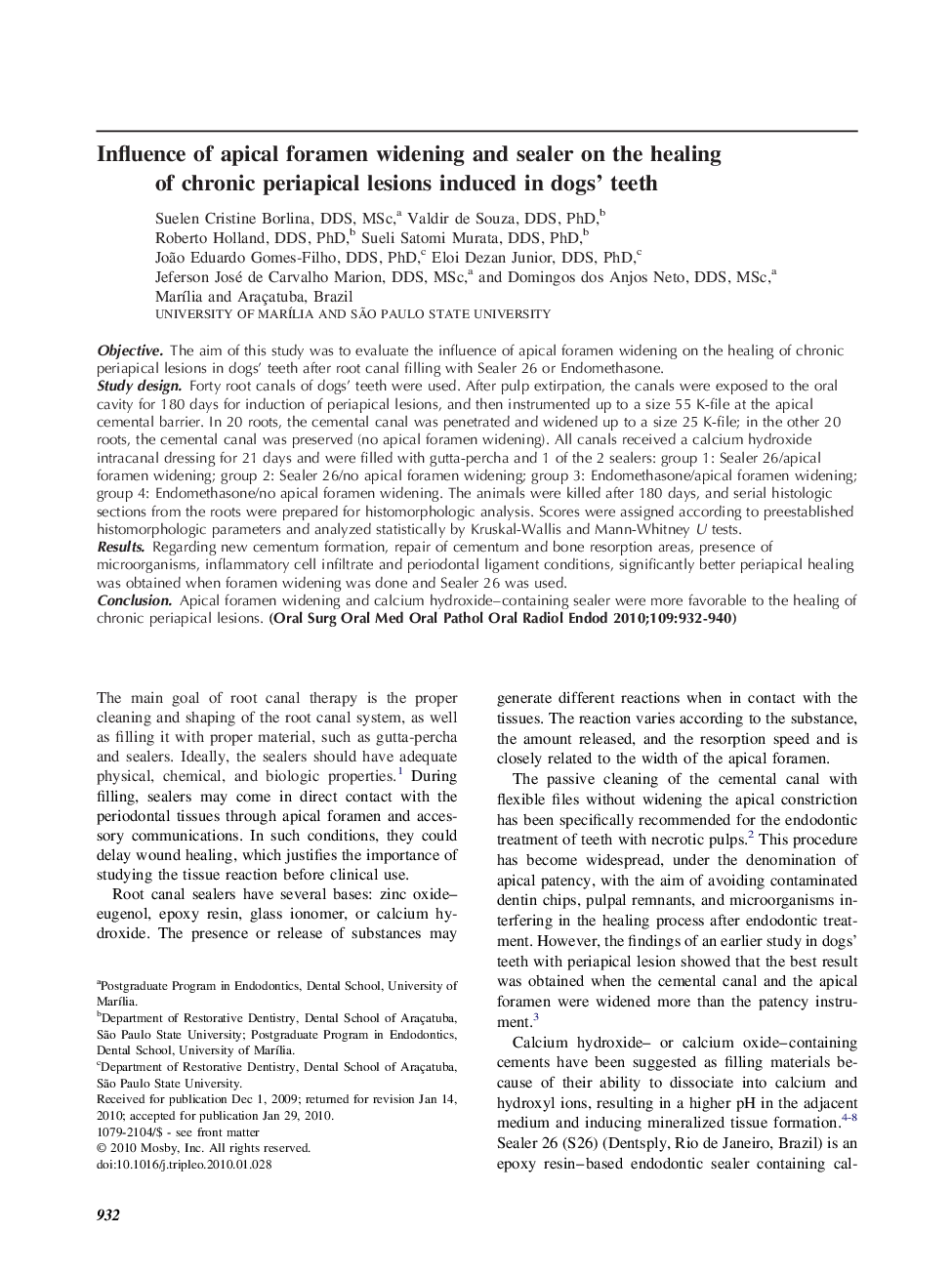| Article ID | Journal | Published Year | Pages | File Type |
|---|---|---|---|---|
| 3167377 | Oral Surgery, Oral Medicine, Oral Pathology, Oral Radiology, and Endodontology | 2010 | 9 Pages |
ObjectiveThe aim of this study was to evaluate the influence of apical foramen widening on the healing of chronic periapical lesions in dogs' teeth after root canal filling with Sealer 26 or Endomethasone.Study designForty root canals of dogs' teeth were used. After pulp extirpation, the canals were exposed to the oral cavity for 180 days for induction of periapical lesions, and then instrumented up to a size 55 K-file at the apical cemental barrier. In 20 roots, the cemental canal was penetrated and widened up to a size 25 K-file; in the other 20 roots, the cemental canal was preserved (no apical foramen widening). All canals received a calcium hydroxide intracanal dressing for 21 days and were filled with gutta-percha and 1 of the 2 sealers: group 1: Sealer 26/apical foramen widening; group 2: Sealer 26/no apical foramen widening; group 3: Endomethasone/apical foramen widening; group 4: Endomethasone/no apical foramen widening. The animals were killed after 180 days, and serial histologic sections from the roots were prepared for histomorphologic analysis. Scores were assigned according to preestablished histomorphologic parameters and analyzed statistically by Kruskal-Wallis and Mann-Whitney U tests.ResultsRegarding new cementum formation, repair of cementum and bone resorption areas, presence of microorganisms, inflammatory cell infiltrate and periodontal ligament conditions, significantly better periapical healing was obtained when foramen widening was done and Sealer 26 was used.ConclusionApical foramen widening and calcium hydroxide–containing sealer were more favorable to the healing of chronic periapical lesions.
